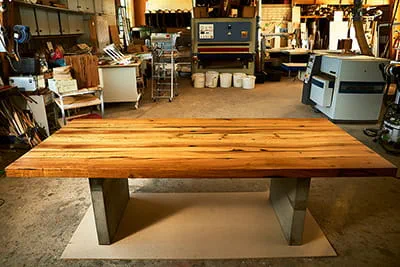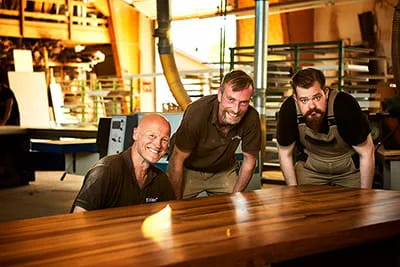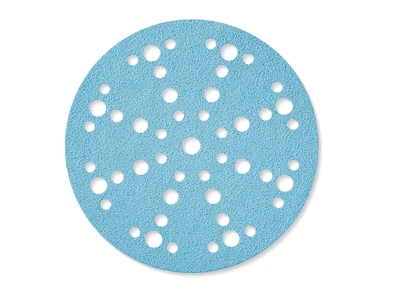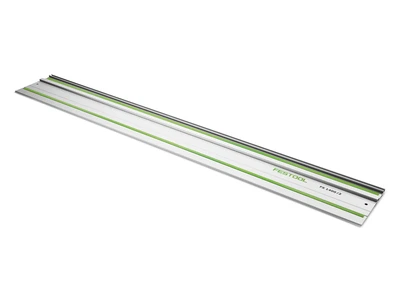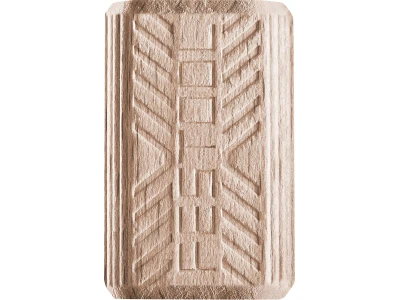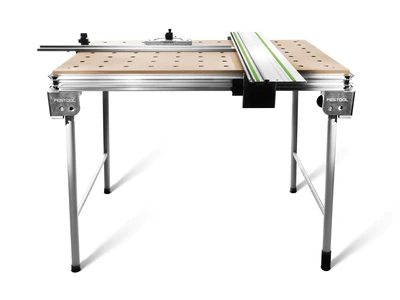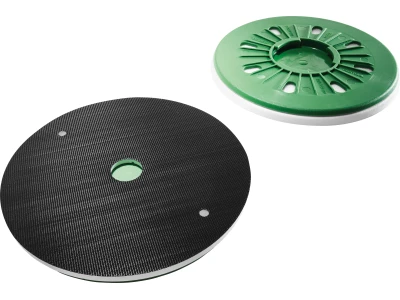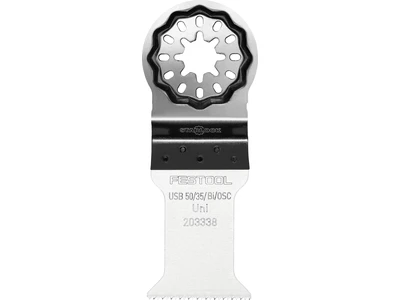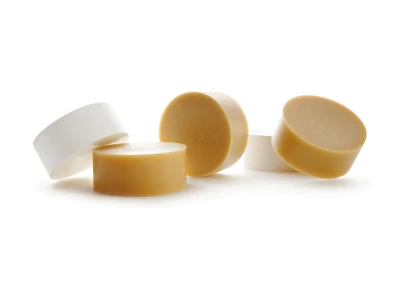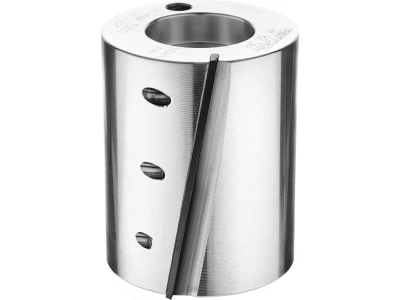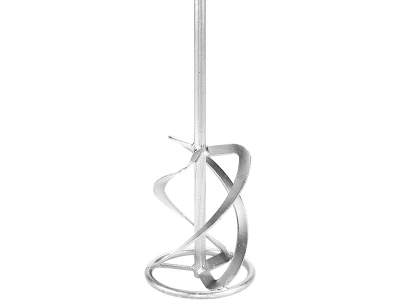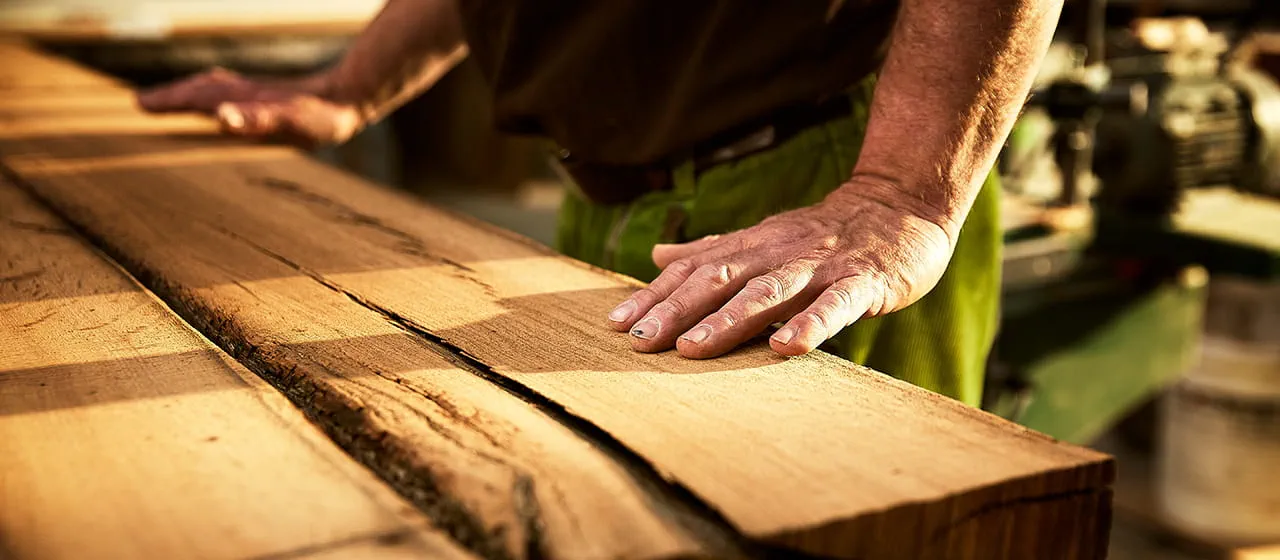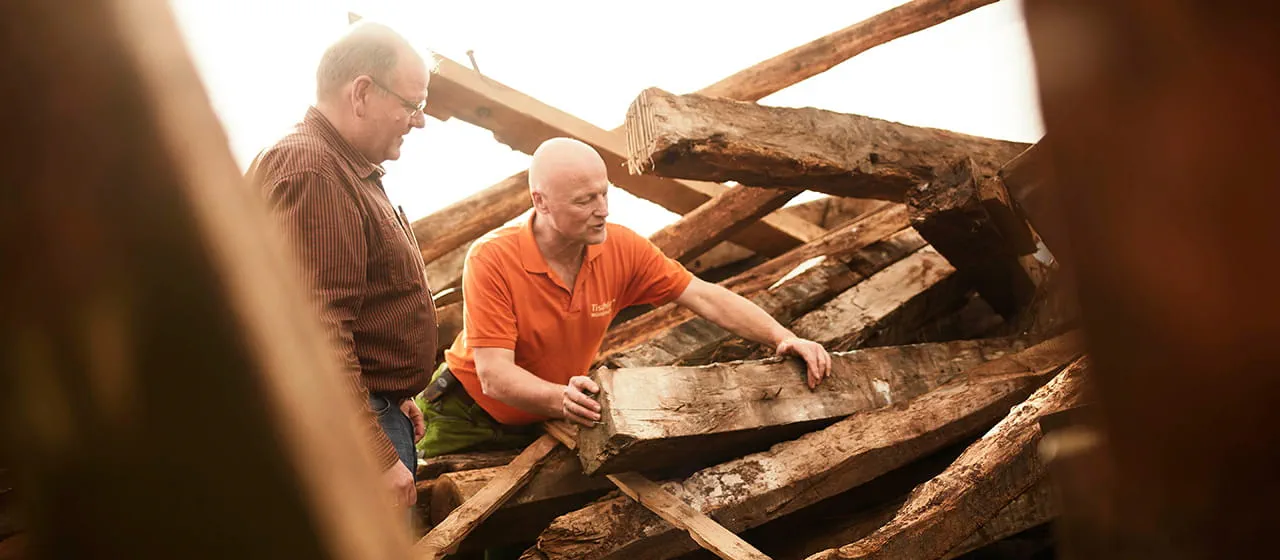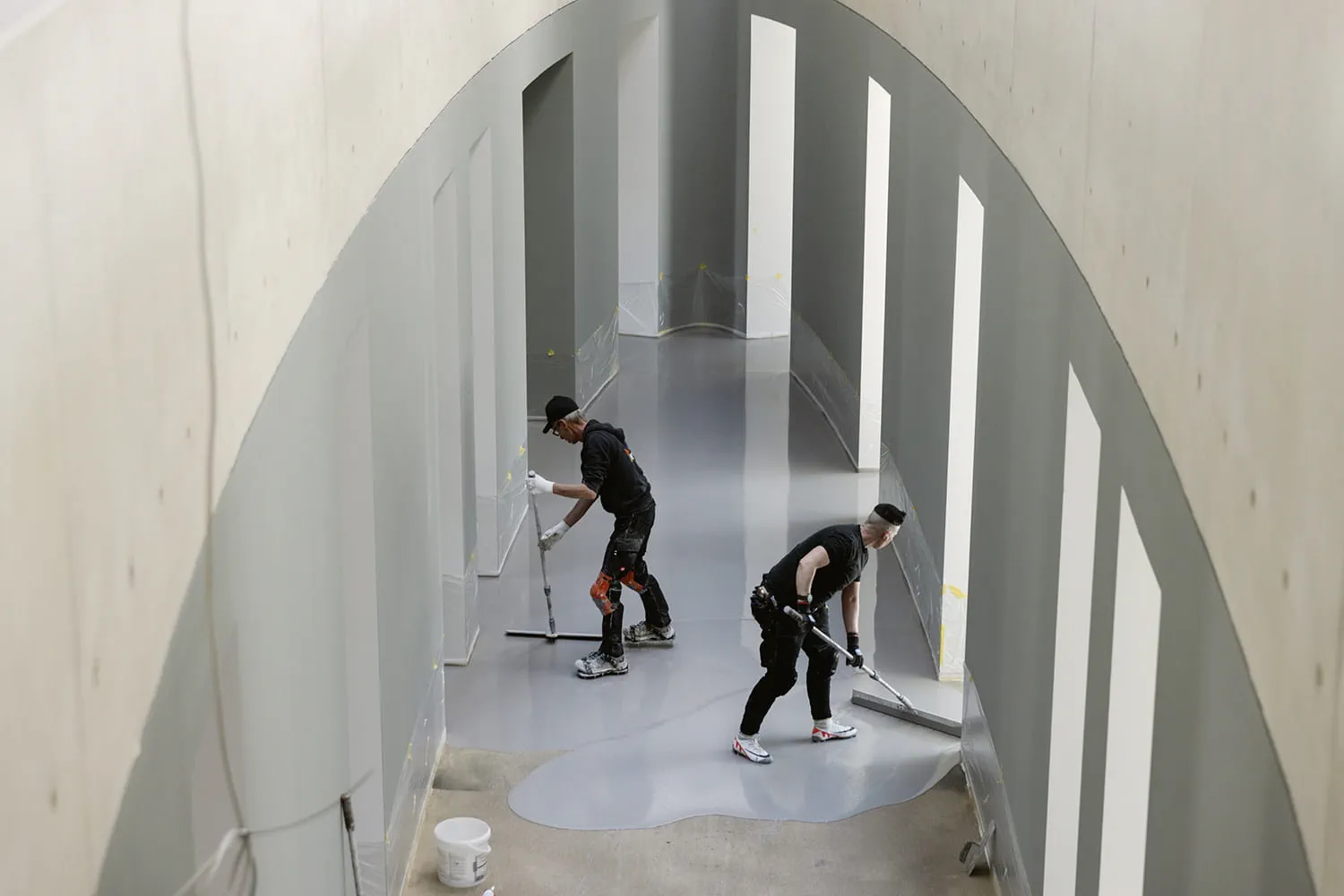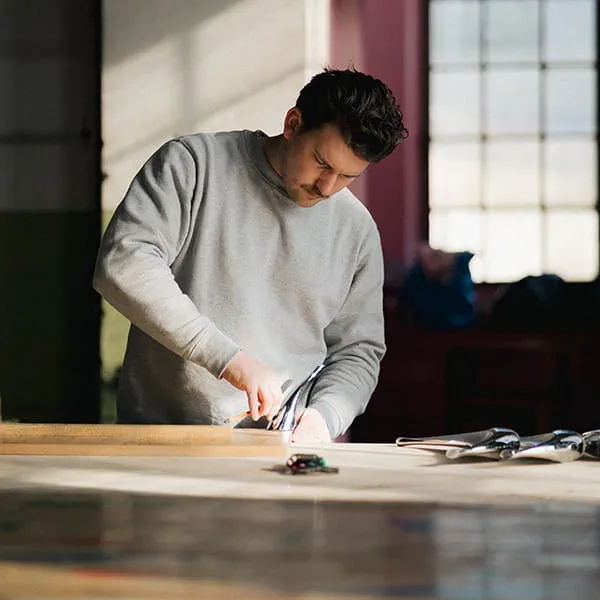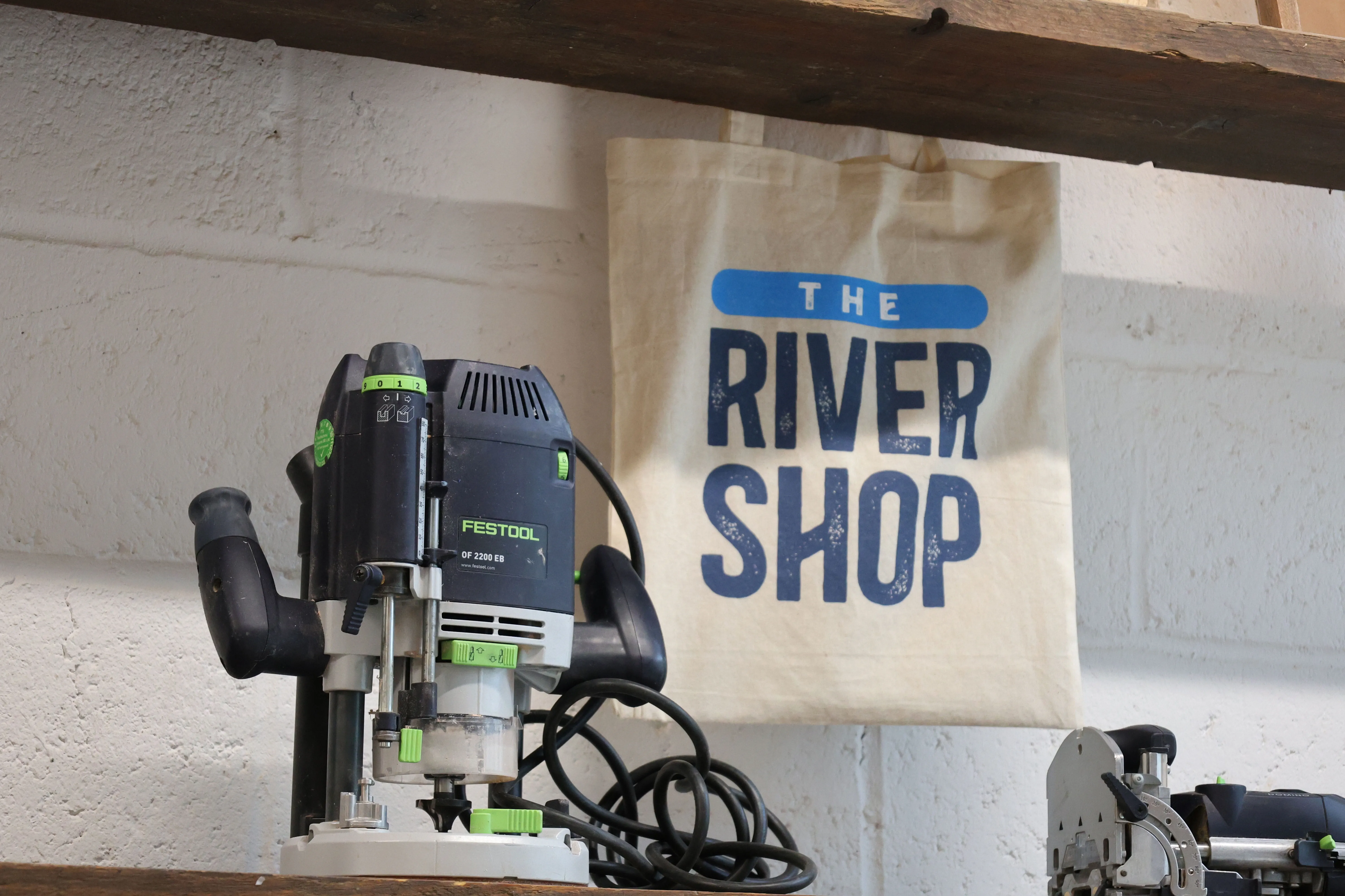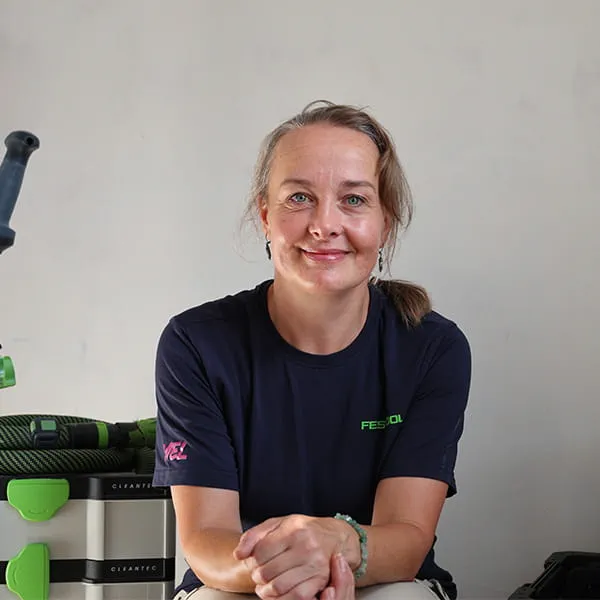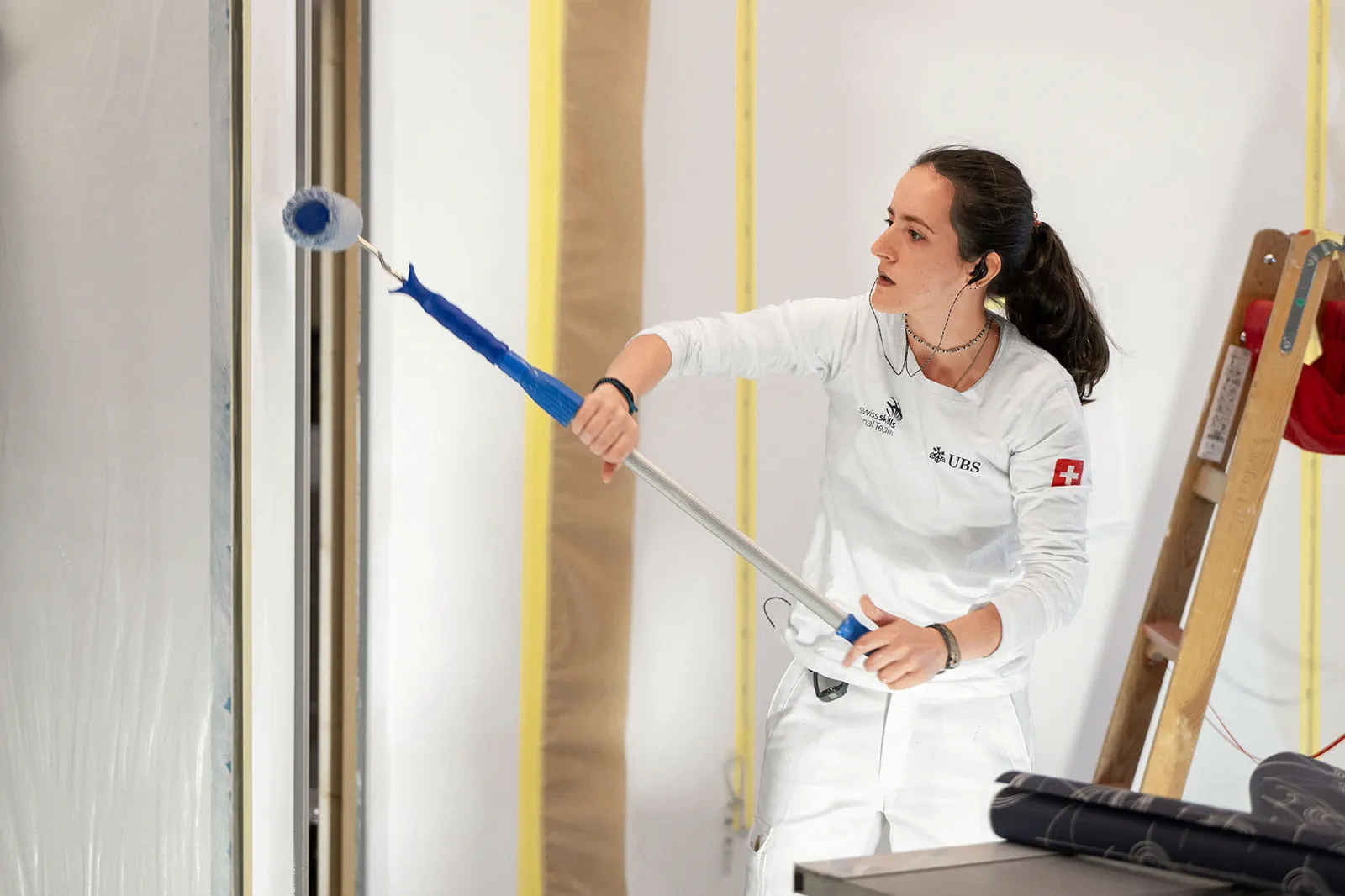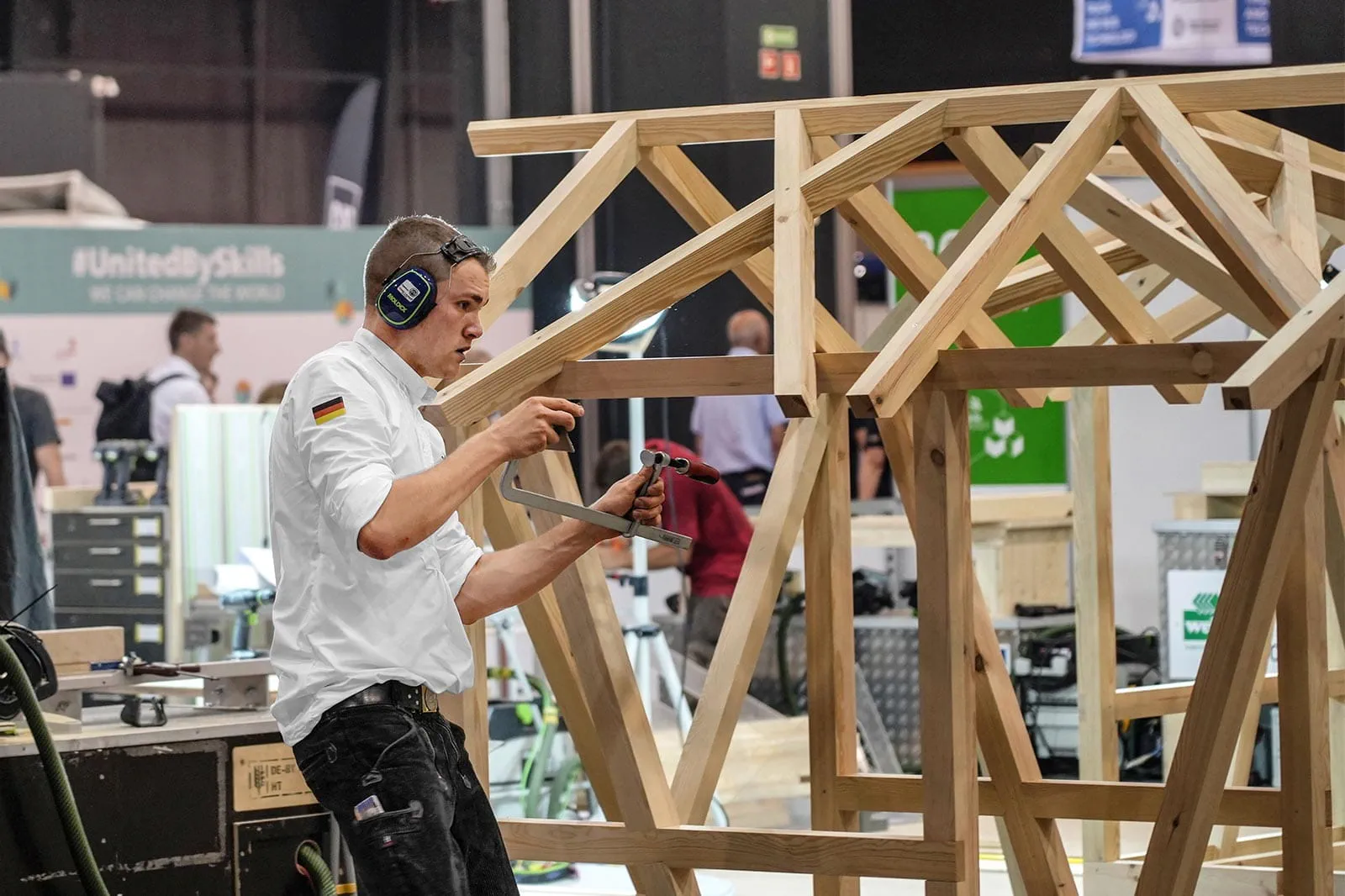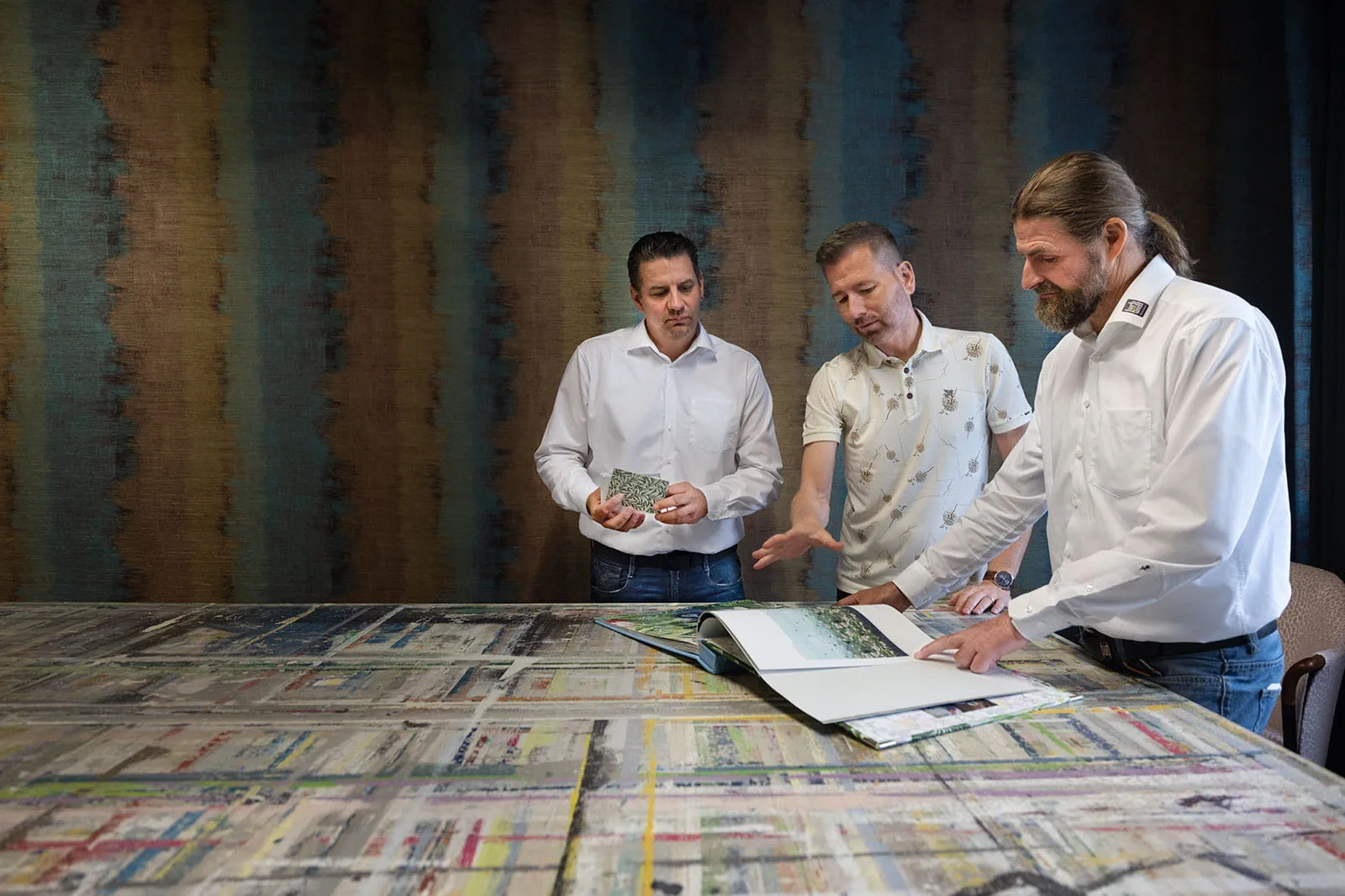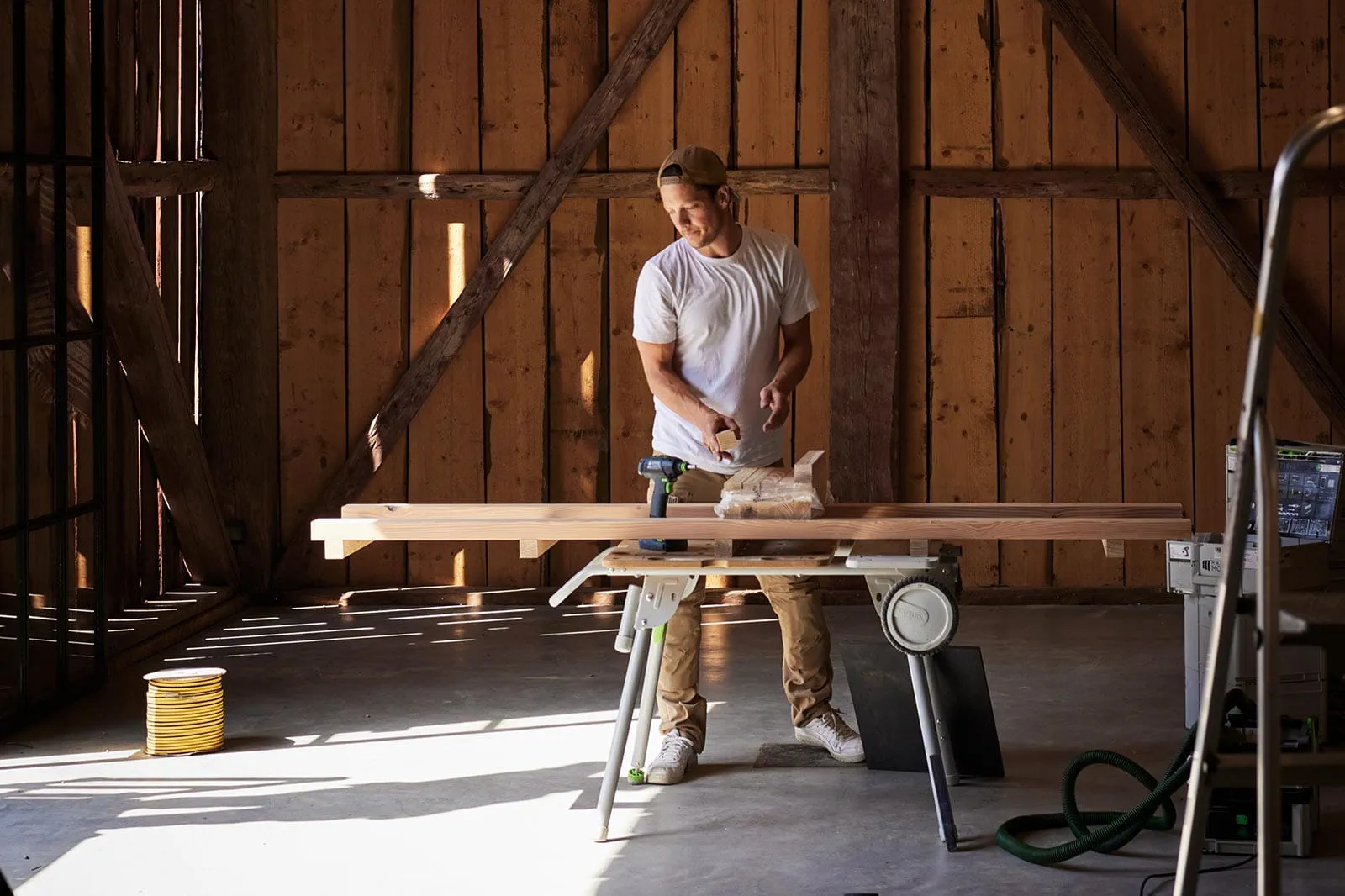
The dream of a table
In Karsten Schillings' carpentry workshop, a special furniture dream is becoming a reality.
If you can make something good even better, it'll be perfect – the same goes for the table made of reclaimed oak that has come to life in Karsten Schillings' workshop. However, the carpenter from Münster did not make it for a customer. Instead, customer Alexander Wirzbach made his furniture dream a reality himself, with guidance throughout the process.
The circular saw begins to whine, the saw blade cutting effortlessly through the wood. Centimetre by centimetre, the blade cuts through the wood fibres and creates a haze of sawdust that sparkles as the sunlight falls on it. This moment is so magical – Alexander Wirzbach only catches a glimpse of it. The university graduate and manager's ear protection shuts him off from the outside world, and he is concentrating intently with his eye on one thing only: The timber plank, which he is currently pushing further through the circular saw. When the saw stops, it is clear that the first cut is finished. Alexander Wirzbach is delighted. You can tell that he is proud of himself, and rightly so. After all, until now his only experience of furniture was sitting on it or as a silent everyday companion that serves its purpose. Until recently, he would not have imagined that he would be operating a circular saw himself and fulfilling the dream of creating his own piece of furniture.
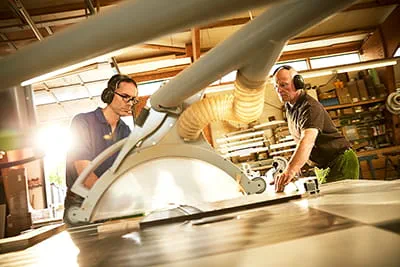
An all-round success
Since the first cut was success, the second, third and fourth quickly follow. Alexander Wirzbach becomes more and more comfortable working with the wood. He quickly gets the hang of how and where he has to exert pressure or traction, running his hand over the edge of the cut after every working step and feeling positive that this will turn out well. After he has switched off the circular saw and the saw blade stops turning, there are 80 millimetre strong, sawn timber planks roughly cut to size in front of him. Both he and carpenter Karsten Schillings are pleased with what they have done so far. Despite the watchful eye that the professional keeps on each of his workshop participants, he is always first and foremost as happy as they are when a step towards the goal is achieved.
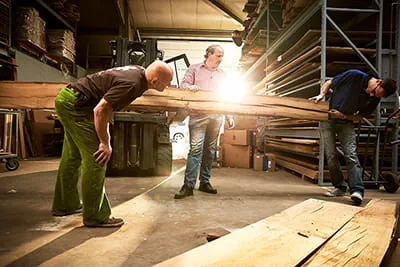
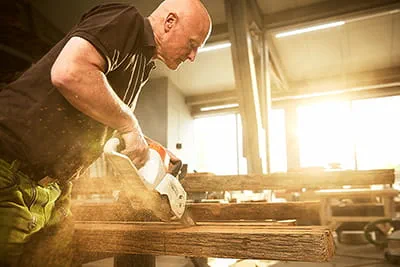
A long workshop weekend begins
In Alexander Wirzbach's case, the goal is a dining table – and a proper dining table at that: It is intended to be 2.8 metres long and 1.2 metres wide. And including the 7 centimetre-thick table surface, it will be 76 centimetres high in total, so that chairs with armrests can easily slide under the table. Since the workshop weekend is short and there is still a lot to do, it's straight back to work. More precisely, back to the stirrer: The exposed concrete pedestals have to be poured. Carpenter Karsten Schillings has decided on a quick-setting mixture.
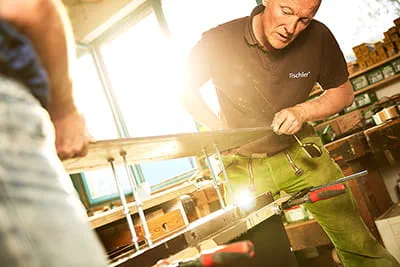
Wood meets concrete
The casings, made from textured coated board, are assembled using the C18 and T18+3 cordless drills, which do the job quickly and powerfully. Next, strengthened with square timbers and fastening clamps, the concrete is poured in and the 50 centimetre-long threaded rods are inserted into the framework before it sets. Nuts are screwed onto the threaded rods at regular intervals as "anchors". They have got to be absolutely secure later, since they will join the pedestals to the coupling plate on the underside of the table surface, ensuring that the table both stays in position and is stable. In addition to the strong connection between the pedestals and the table surface, the 12 millimetre-thick coupling plate ensures that the huge table surface will not be able to warp later.
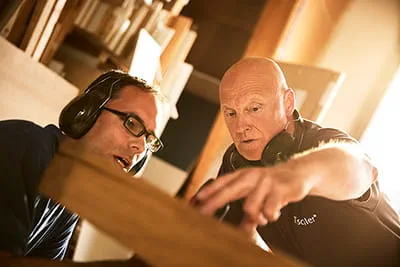
A dining table ... but not just any dining table
The fact that there is so much to do this weekend and the dining table has such impressive dimensions can be traced back to what Alexander Wirzbach has been looking for. For a long time – almost too long – he and his wife have been searching for a suitable table and have never struck gold. And even for the ones they would potentially consider, there was always a certain something missing. A happy coincidence brought the manager from Mannheim and the carpenter from Münster together. Schillings completed a commission in Wirzbach's neighbourhood and was recommended. One thing quickly led to another. Schillings soon noticed that his future customer was looking for something special, and made a suggestion: A table made of reclaimed oak. A table around which you tell stories, which is a part of history itself and the making of which has its own individual story – all that handmade in a modern shape. This idea struck a chord with Alexander Wirzbach.
"A table around which you tell stories, which is a part of history itself and the making of which has its own individual story – all that handmade in a modern shape."
Karsten Schillings, master carpenter
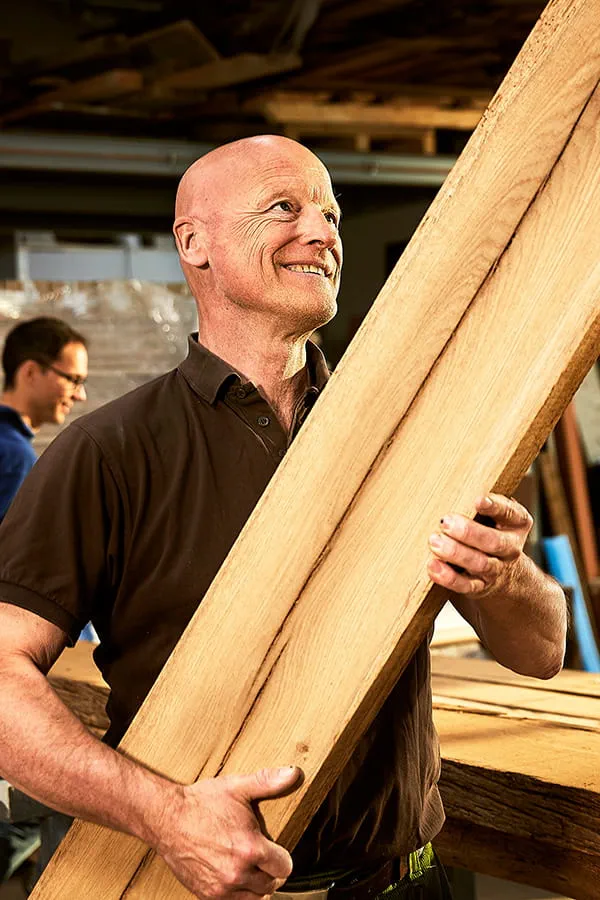
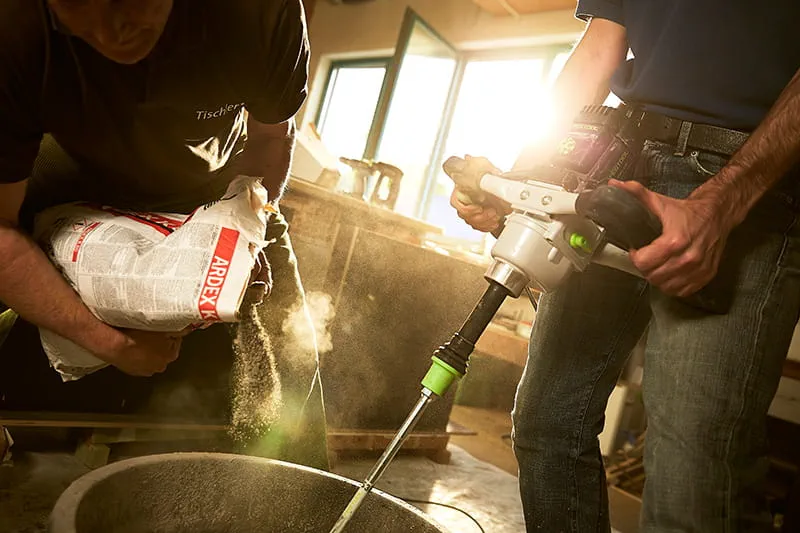
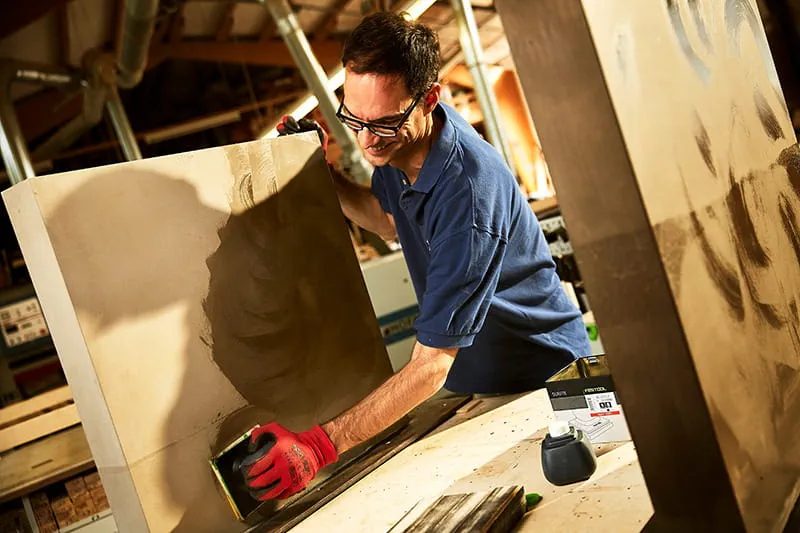
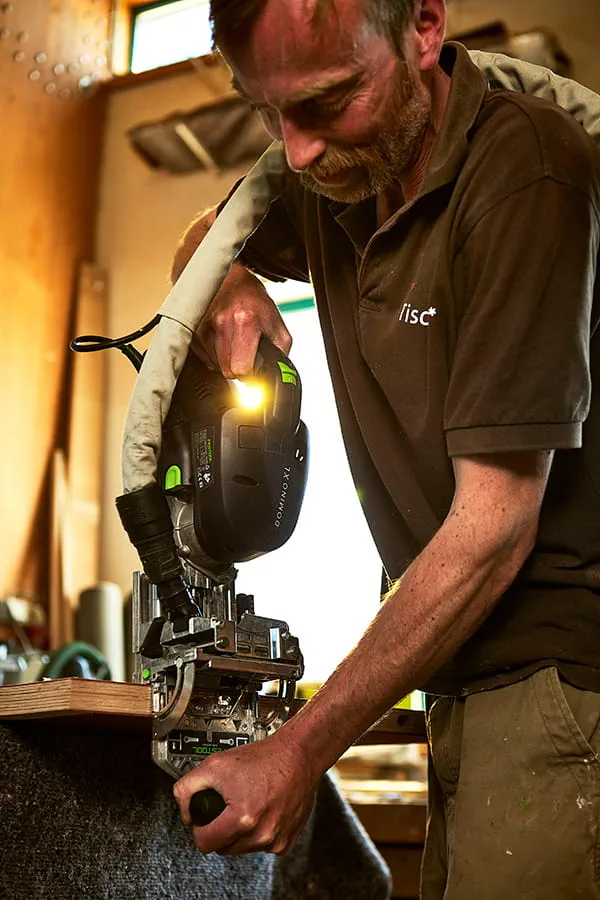
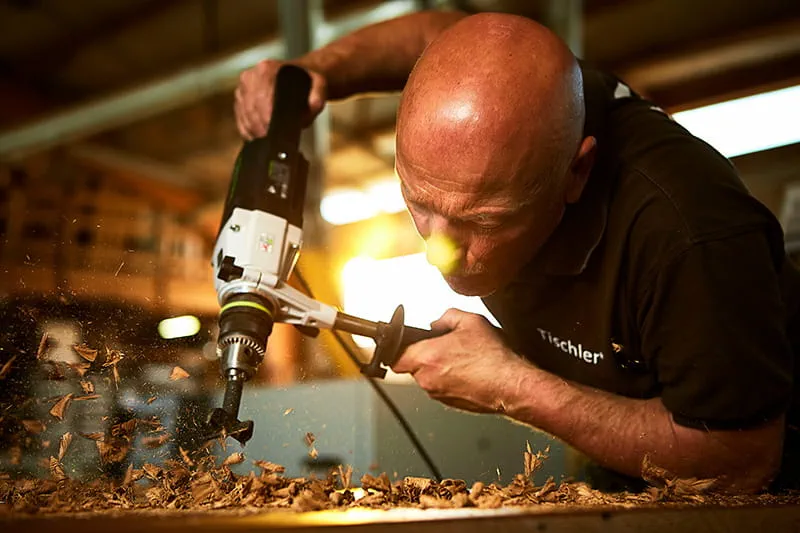
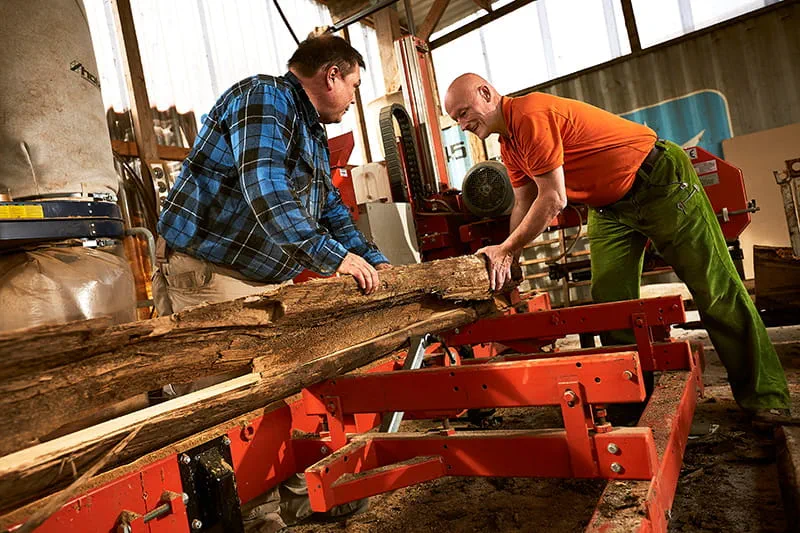
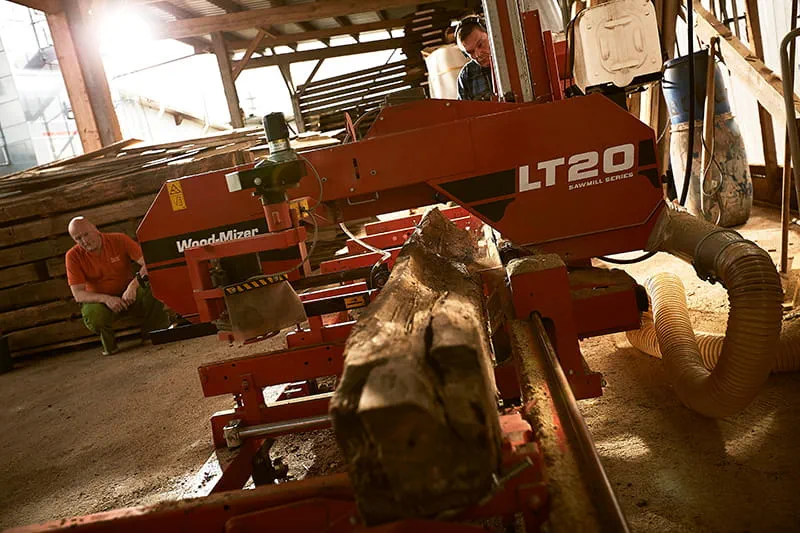
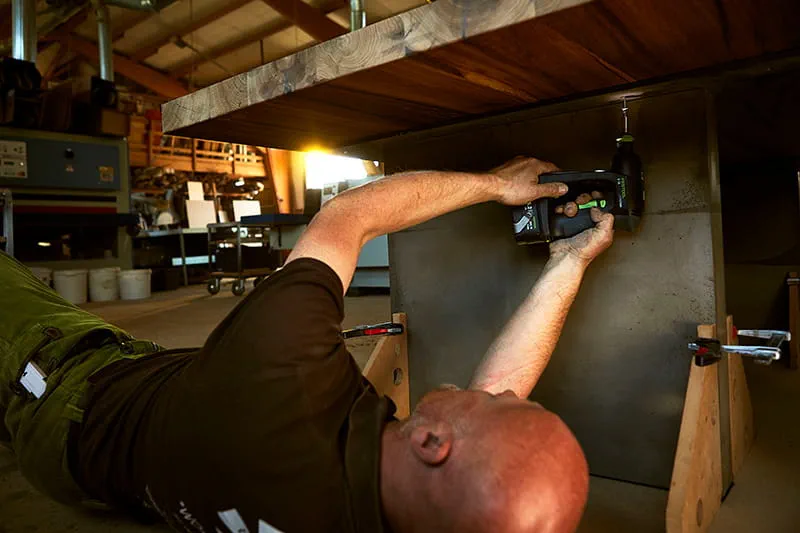
Travelling back in time
So, back in his joinery in Münster, Karsten Schillings started his search for suitable materials straight away. In Greven, about 20 kilometres away, he found what he was looking for with his colleague Markus Holtmann, whose "wood with history" comes from half-timbered houses and barns that are two to three hundred years old – sometimes older still, since beams from dismantled or converted buildings were also reused in earlier centuries. Without further ado, Schillings sent an example of the wood in question to his customer. The choice had to be narrowed down, since the structure of reclaimed wood can vary considerably, and sometimes there are more or sometimes fewer mortises or other signs of wear. Alexander Wirzbach made the final selection after visiting the Holtmann joinery – an exciting process that took two hours. The wood had already been vacuum dried beforehand, leaving a residual moisture content of eight per cent in the wood. This residual moisture content is suited to the air humidity in modern buildings so that the wood works less later and does not warp.
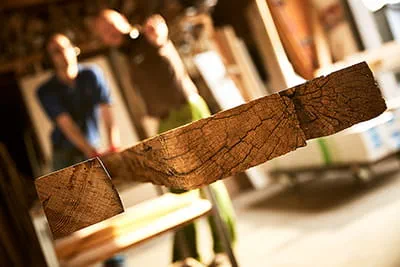
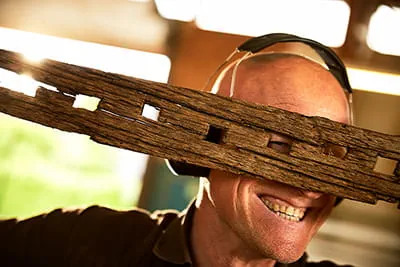
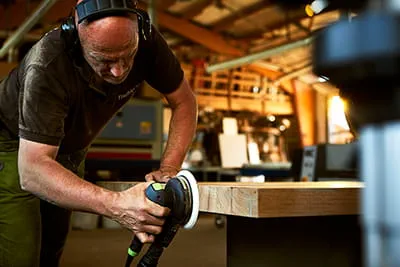
The final touches
After four days' work, it is all done. The table is (almost) finished. Sadly, Alexander Wirzbach cannot carry out the finishing touches himself, or even be there at all, since filling the cracks in the centuries-old wood with epoxy resin and waiting for it to dry just takes too long. After his colleague Markus Holtmann has worked his magic with the resin, Karsten Schillings takes over with a colleague and an apprentice to carry out the final finishing touches with the ETS EC 150 eccentric sander. With its 320 grit, they give the epoxy resin a beautiful shine, whilst also taking care not to polish the reclaimed oak. Finally, the entire surface is varnished with Festool natural oil.
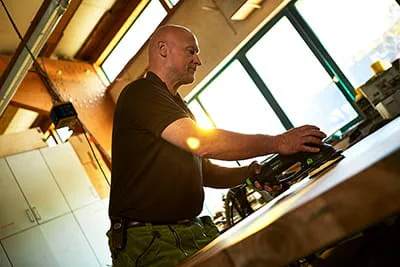
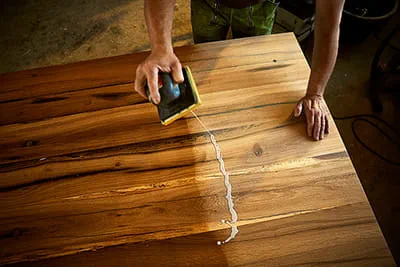
"150 kilos for the table surface, 150 kilos per concrete pedestal"
Although Alexander Wirzbach is not there while the final work steps are carried out, he is delighted with the result. In the end, he and Karsten Schillings have not just made any old piece of furniture – they have created a modern dining table with its own history and individual characteristic traits. The fact that this can certainly bring sweat to your brow is also evident in delivery: "150 kilos for the table surface, 150 kilos per concrete pedestal," estimates Schillings for the weight. And that means "four corners and four men" for each component, as well as a lot of muscle strength to get the table into its position. Alexander Wirzbach now notices every day that the dining table is something special, and every time he runs his hand over the table surface, he remembers that at the beginning he never would have thought that he could build something so stunning himself.
